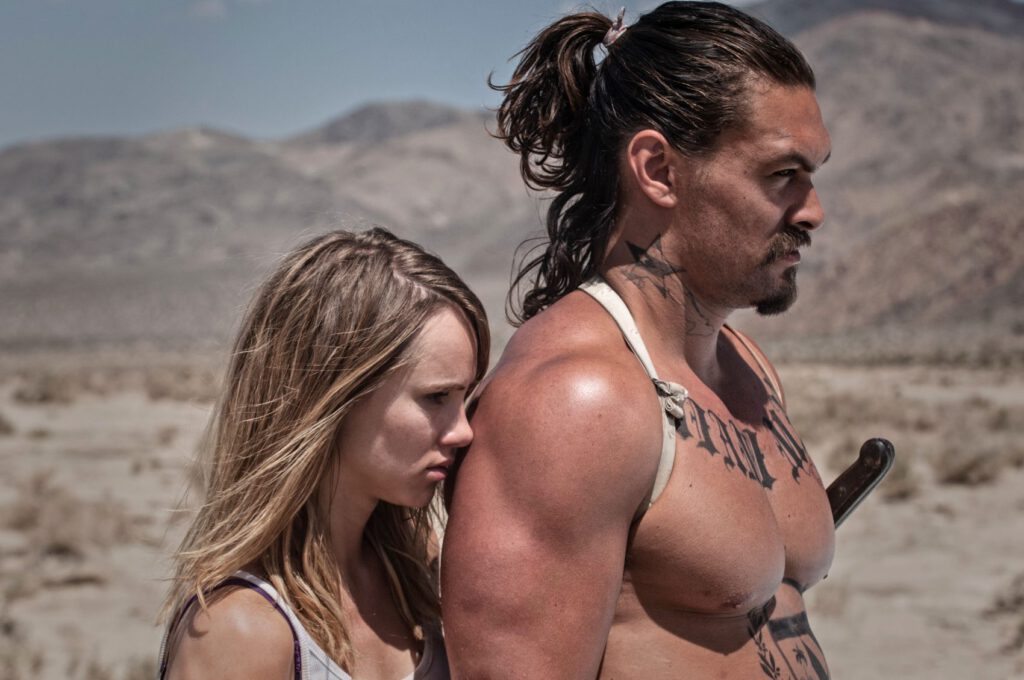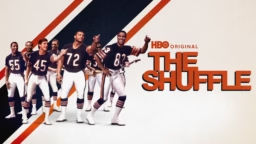“Go warn the children of God of the terrible speed of mercy.”
— Flannery O’Connor, The Violent Bear it Away
“The Bad Batch” is an American cinema masterwork, one of the best films of the year, and not enough people seem to understand why I might even think that.
It’s a cannibal movie, sure, but one that has more in common with the Southern moral mazes of Flannery O’Connor’s fiction or the dream-logic cinema of David Lynch than any classic grindhouse exploitation film. Occasionally, audiences and even critics can miss the greatness of a certain graphic genre film because of a basic assumption that such films aren’t supposed to be demanding art; by assuming that at best, such films are just visceral entertainment. We don’t expect to extract layers of symbolism, meaning or complex emotion from such lurid terrain, so our viewing of say, a cannibal movie, can be inherently passive.
But “The Bad Batch” has an abundance of buried riches for anyone willing to dig. It is a meditative art film wrapped in a bloody genre blanket, buried deep in a scorching sci-fi desert. It is a sheep in wolves’ clothing—something apparently dangerous and crude, but underneath, heartfelt and meaningful. This sprawling, nightmare tapestry of a film dives deep into our collective American soul-sickness, into the oppression of our basic social systems and the delusion of our basic ideals. And “The Bad Batch” achieves all of this without a detectable shred of didactic analysis; it is a subconsciously visceral, semi-surrealist, punch-in-the-heart moral purge. It is filmmaking of the highest order, which is no surprise given the excellence of writer/director Ana Lily Amirpour’s debut feature, “A Girl Walks Home Alone at Night.”
During the first forty non-dialogue minutes of “The Bad Batch,” we are drawn slowly into a broiling, dreamlike Texas landscape where criminals (known as Bad Batch) are deported to fend for themselves. Amirpour presents her hot dirty desert as a vast expanse of spiritual malaise. It is the blazing American South’s equivalent of Bergman’s cold, despairing riverfront in “Winter Light” or the wet, dread-drenched rocky seaside of Antonioni’s “L'Avventura.”
This harrowing wasteland is ruled by two social groups.
First we meet the Bridge People: body-building, protein-obsessed cannibals, literally devouring those not within their own camp—a social metaphor so blunt, it’s actually easy to miss. And these are cultured cannibals, as we learn though the introduction of Miami Man (Jason Momoa), his wife Maria (Yolanda Ross), and their shy young daughter, Honey (Jayda Fink).
The film’s tall, blonde protagonist is Arlen (Suki Waterhouse), an often inscrutable girl clad in yellow, ironically winking smiley-face shorts. Upon entering the desert, she is quickly captured by Bridge People, and we watch in horror as both her arm and a leg are amputated, then grilled, then eaten. Arlen manages to kill one of her cruel captors before escaping out into the heat of the apocalyptic desert sun.
The second Bad Batch social community are those who find “Comfort”—a desert rave town of meaningless distraction and pharmaceutical escape, built by an epicurean overlord named The Dream (Keanu Reeves) who surrounds his wasteland existence with gardens, buckets of ice, and a plethora of pregnant young concubines. Comfort and The Dream are another bluntly and effectively accurate American metaphor—this time for consumer culture and the white privilege predators that shrewdly and greedily feed their opiates to the masses.
Dying in the desert, Arlen is rescued by The Hermit (Jim Carrey), a homeless mute who carries her to Comfort, but has no desire to enter himself. Just as Amirpour knowingly de-mythologizes one of our great American action icons by having Keanu Reeves play a soft-bodied, Hefner-like opportunistic playboy, bragging of power from his toilets and sewage system, she also cleverly recontextualizes one of our great American comedy icons in Jim Carrey as the virtually silent, comic essence of desert mercy itself. Carrey’s brilliant performance is wildly unexpected and demands close attention. He is the spiritual center of this film. Always moving like the searing wind, this way and that, randomly helping desperate strangers along the way.
Inside the town of Comfort, Arlen finally has the film’s first dialogue scene with Bobby (Giovanni Ribisi), a maniacal madman ranting to himself about “the one thing you must never forget.” “What’s the answer? What’s the one thing you must never forget?” Arlen asks, to which Bobby replies, “You’re gonna have to figure that out for yourself.” This conversation is critical to understanding “The Bad Batch.” It is a deceptively significant exchange about the mystery of existence itself; about what is of utmost importance in a desert world of suffering. Arlen, provoked by this conversation, reacts in a most American movie kind of way—she decides that the “one thing” she wants is justice for her loss. No wait, not justice, she wants vengeance.
So she does what a thousand other American movie heroes have done before her—she packs a pistol and heads out to right the wrong done to her.
And what happens next is the defining event of the film.
Arlen spots Miami Man’s wife Maria and their daughter Honey at a distance, searching for plates in a nasty trash heap. The camera tracks behind Arlen, her smiley-face shorts swinging full-frame as she stalks menacingly toward the woman and her daughter. Watching this shot I was for a moment reminded of the intoxicatingly fun homicidal glamour of “Kill Bill,” but then, with a kind of sinking dread, I thought, “If this turns into a revenge flick with Arlen gleefully killing off Bridge People, I’m gonna hate the living hell out of it.”
Arlen closes in, points the pistol at Maria, and speaks with snarling contempt at this woman she doesn’t even know. Filled with displaced fear and rage, gun leveled at the defenseless mother on the ground, Arlen pulls the trigger and bang, Maria’s dead.
No blood spray, no gratuitous torture, no prolonged suffering—just the banality of killing, as Maria falls backward into death, in front of her own daughter.
And the next shot is, for me, the signature image of the movie.
Arlen’s close-up reaction displays more than shock or disillusionment. Arlen not only feels no vengeful satisfaction, but her confusion and vacant disorientation are so palpable, it’s as if we watch Arlen’s soul leave her own body. This killing was an evil act, and Arlen immediately knows it. As she watches little Honey try in vain to wake up her dead mom, Arlen begins to reckon with the horrific reality that a killing like this can never be undone.
For the next hour of the film, Arlen is emotionally and psychologically lost. She won’t kill again, and therefore, the remaining minutes evolve into a kind of anti-revenge movie. After taking Honey with her to Comfort, Arlen is asked by The Dream what she, Arlen, really wants. Her answer, “I want to be the solution to something.” This answer is anthemic, heartbreaking, and mysterious all at the same time. Arlen decides that while she can’t bring back the life she took from Maria, she can at least attempt to rescue Maria’s daughter from the clutches of The Dream, and perhaps reunite her with her father, Miami Man. This becomes Arlen’s new life goal, her last gasp attempt to find her “one thing” and break the cycle of violence that has plagued her life as both victim and perpetrator.
In the film’s final scene, Arlen does bring Honey back to Miami Man, and then surprisingly suggests they all “hang out” together. Miami Man is struck by the meaning of what she is really proposing: that even though Arlen killed his wife, and even though he is the killer cannibal who literally ate Arlen’s limbs, mercy has now entered the scene, and with it, the most wild possibilities.
Miami Man chooses to kill his daughter’s pet rabbit, and together the three of them sit and cook the rabbit around a cozy campfire, implying reconciliation and the hope that Miami Man may end his cannibalistic ways. But then the tone of this scene shifts delicately, like the slow waking-up from a long, dire nightmare into the evening shadow of harsh reality. Honey weeps openly during this scene for the rabbit she loved but now must eat to survive. She weeps for her dead mother, gone forever. She weeps for the brutal world she must grow up and live within.
The worst residual effects of our cyclical violence and selfish escapism are always passed down to our next generation of children. How Honey will respond to all this trauma will be up to her, and that response will become the story of her life. It’s a bleak prospect, but not without hope.
So what is the one thing we must never forget? As Bobby says, we have to figure that out for ourselves.
But after multiple viewings of “The Bad Batch,” and after looking at the current state of the world, the state of my relationships, and even the state of my own soul, I fancy that the one thing we must never forget, is mercy.
Scott Derrickson is the director of “Doctor Strange,” “Sinister” and “The Day the Earth Stood Still.” This is his first piece for RogerEbert.com.











